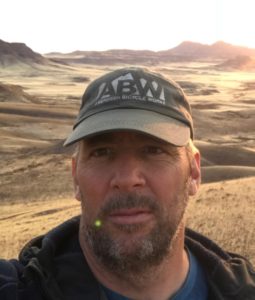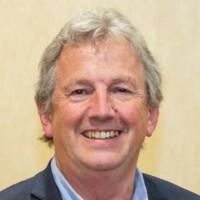1-31 January 2022
Course Description
Session 1 | Deepwater systems
Facilitator: Duncan MacGregor
Date: TBC
6:00pm – 8:00pm
More details to be announced
Session 2 | Morocco: Atlantic Margin Petroleum System
Facilitator: Jonathan Redfern
Date: TBC
6:00pm – 8:00pm
A 2-hour tour of some of the superb outcrops in Morocco, that allow examination of the Central Atlantic Margin sequence above the Paleozoic basement. We will evaluate the depositional systems, tectono-stratigraphic framework, reservoir characterization and source to sink of the Triassic, Jurassic and Cretaceous petroleum systems. These outcrop analogues offer an insight into the active plays offshore Morocco, Mauritania, Senegal, The Gambia and the Nova Scotia / US conjugate margin.
We will start with a look at the Triassic continental rift sequences in the High Atlas and Argana, followed by a quick tour through some of the spectacularly exposed Jurassic passive margin carbonates and finally some examples of the Early Cretaceous paralic deposits, the feeder systems to potential offshore deepwater reservoirs.
This short course is based on over 20 years of NARG research in the region, with work undertaken with numerous PhDs, including Nadine Mader, Ivan Fabuel-Perez, Aude Duval-Arnould and Tim Luber, and the many enjoyable company field trips we have led together. We will show some Lidar images for the Oukaimeden Triassic outcrops, but we haven’t as yet captured digital (drone or Lidar) data for most of the others sections, so the talk will rely largely on traditional photos and examples of the research to build the story.
- Triassic syn rift continental sequences from Oukaimeden and Argana
- Jurassic Carbonates from Immouzer and Cap Gir
- Cretaceous paralic deposits from Assaka and Tiskatine
Nothing beats seeing the rocks in the field, but this will be the next best thing!
Session 3 | Aeolian sandstones and lavas from the Cretaceous of NW Namibia
Facilitator: John Howell
Date: TBC
6:00pm – 8:00pm
An aeolian sand sea (erg) engulfed and entirely fossilised by flood basalts, with fully preserved, internal and external dune geometries. The Huab region of NW Namibia contains a series of spectacular outcrops that chapter the drowning of a rift related aeolian system (Twyfelfontein Fm) by the Etendeka flood basalts, associated with the opening of the South Atlantic. These rocks provide a unique insight into aeolian sedimentary systems, sediment lava interaction and are directly analogous to aeolian reservoirs offshore Namibia (Kudu) and on the conjugate margin in Brazil. They also shed interesting insight into other aeolian systems worldwide. During the course of this virtual field trip we will
- Introduce the regional setting and stratigraphy
- Follow a transect from the erg margin into the erg centre looking at changes in aeolian bedform scale and style
- Look at the interaction between aeolian sediments and rifting
- Study the progressive drowning of the erg by successive stages of lava eruption.
- Discuss diagenesis related to igneous intrusions.
- See some truly spectacular geology in an area that is well off the normal fieldtrip rota.
All work is based on the authors studies on collaboration with Dougal Jerram and Nigel Mountney over the past 25 years. The trip will be based on virtual outcrops and delivered via LIME, a dedicated VFT software developed by the trip leader and colleagues from NORCE.
Session 4 | Fluvial and Tidal Reservoir Heterogeneity
Facilitator: Gary Nichols, in collaboration with ImageReality
Date: TBC
6:00pm – 8:00pm
The session will use 3D outcrop models from a variety of locations to explore different scales of heterogeneity in fluvial and tidally-influenced sandstone units.
- System-scale fluvial sedimentology: considering tributary and distributive patterns of channels in predicting sandstone body distribution
- Fluvial channel-sandstone body architectures: stacking patterns in space and time
- Heterogeneity within fluvial channel-fills: lateral accretion surfaces and bar complexes
- Estuarine successions unrelated to incised valley fills: tidally-influenced transgressive coastal deposits in the stratigraphic record
- Sediment body geometries and internal heterogeneities in tidal sands in coastal and shelf settings
The session, in which participants will be able to interact, will be delivered using 3DGaia – a multiuser, interactive, remote collaboration platform for Geoscience, developed by Imaged Reality. PC users who have registered for the course are invited to actively participate in the session using the 3DGaia software. However, this is optional, and participants will also benefit from the session by following on Zoom. check system and hardware requirements here
Speaker Biography - John Howell

John Howell is the Professor of Virtual Geoscience at the University of Aberdeen. His current research focuses on all aspects of virtual geosciences, including the improved use of analogues for understanding reservoirs. In the past 25 years he has worked on outcrops from all over the World with special focus on the western USA. He has supervised over 50 PhD students, published more than a 150 papers and edited 7 books. He currently runs the SAFARI project, a collaboration between University of Aberdeen and NORCE Research in Bergen supported by 14 companies. Over the past 15 years he has pioneered the use of Virtual Outcrops, collected using lidar and more recently UAVs (drones), in the geosciences. He is the co-founder of V3Geo.com a public virtual outcrop database and has numerous TV and other media appearances.
Speaker Biography - Gary Nichols

Gary Nichols is responsible for the strategy and technical development of energy training for RPS Energy.
Before joining RPS Gary taught at Royal Holloway University of London and the University Centre on Svalbard covering undergraduate and MSc courses in Sedimentology, Sequence Stratigraphy, Petroleum Geology and Sedimentary Basins.
His main research interests are in clastic sedimentology and sedimentary basin analysis with a focus on fluvial and coastal patterns of sedimentation. He has carried out field studies in flexural basins in Spain, Greece, USA and Spitsbergen, in extensional basins in Madagascar, Greece, northern Thailand, the Red Sea and the Gulf of Aden and in arc-related settings in Antarctica, Indonesia, the Philippines and Malaysia.
In addition to journal papers, Gary is author of a textbook ‘Sedimentology and Stratigraphy’. He was formerly President of the Society for Sedimentary Geology (SEPM).
Speaker Biography - Jonathan Redfern
Jonathan Redfern has over 35 years’ experience in industry and academia. He is Chair of Petroleum Geoscience at the University of Manchester, one of the largest energy geoscience and engineering research and teaching groups in the UK. As Director of the North Africa Research Group (www.narg.org.uk), he leads a large team of PhDs, Postdoc and Researchers who have been undertaking fieldwork / studies across North Africa for over 20 years in Morocco, Algeria, Tunisia, Libya, Egypt, Senegal and Mauritania, sponsored by leading energy companies.
Jonathan began his career in the oil industry working as a geologist for Fina UK, Petrofina and Amerada Hess, based both in the UK and globally. He later moved to academia to develop petroleum geoscience research and teaching programmes. His research interests include regional geology and basin analysis, fluvial and glacial sedimentology. He also consults and runs training courses. In 2020 he co-founded the Energy Transition Centre for Master Training, a UK initiative to foster collaboration among academia, industry and government to tackle the urgent training challenge in geoscience and engineering.
Venue Information
This event will be delivered online.

